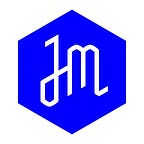An Outsider Looking In: Ilse Bing’s (Self)-Portrait of New York City
In 1936, German-Jewish photographer Ilse Bing traveled to New York City for an exhibition of her work at the June Rhodes Gallery. As a former doctoral student in the history of architecture, Bing knew buildings. She recalled:
“I did not find the New York skyline big like rocks. It is more natural than that, like crystals in the mountains, little things grown up.”
Over the course of three months, Bing traversed New York, documenting the city with an outsider’s eye through her Leica camera. She applied unique angles and unusual points of view to the high and low — from the towering skyscrapers to everyday street scenes. She loved what she saw. New York, she said, had a “jazz rhythm.”
New York–Me and the Elevated (1936) in the Jewish Museum collection, on view now in Scenes from the Collection, highlights the many modernist approaches to photography that Bing embraced upon moving to Paris in 1930 from her home in Germany: pictures framed unconventionally, everyday objects as abstracted forms, and a focus on the disregarded elements of urban life. Taken from an elevated subway platform across the East River, the photograph frames the Manhattan skyline, including the six-year-old Chrysler building. Within the diagonal lines of the train track and the Queens rooftops below, Bing captured her early enthusiasm for the city she would eventually call home.
Yet the cityscape in this photograph has a twist: Bing herself. On the right side of the image, we see Bing reflected in a round object, thought to be a scale installed on the elevated subway platform for riders to weigh themselves while waiting for the train. Bing can be seen holding her Leica — a handheld 35mm camera so integral to her work that she came to be known as “the Queen of the Leica.”
In the circular part of this scale, we see Bing at her vantage point. Her view gives everyone, New Yorker or not, a fresh perspective on this environment. The photograph combines elements of the cityscape with her self-portrait, inspiring such questions as: Who am I in relation to this place? How does our environment and its architecture affect who we are? How do we affect it?
Bing had no way of knowing that she would be forced to find refuge in New York City just a few years later. In 1940, she and her husband Konrad Wolff, a pianist and musician who was also Jewish, were interned as enemy aliens by the French government during World War II. Both managed to attain freedom and sailed for New York later that year. Upon her arrival, Bing encountered an artistic scene that was different from her first visit. The city was now a sanctuary for many European photographers who escaped persecution during the war. Bing, whose arrival had been celebrated only a few years earlier in a gallery exhibition, suddenly found it difficult to obtain work.
What would New York–Me and the Elevated have meant to Bing just five years later? How did the city change over those years, from her view in 1936 as an optimistic first-time visitor, to her view as a refugee in 1941?
Bing lived in New York for the rest of her life, and later became a U.S. citizen. She taught photography at times, but by 1959, gave it up altogether. She began to write poetry, calling what she wrote “snapshots without a camera.” She created collages with old photographs. She illustrated books. She groomed dogs. She even began riding the motorcycle well into her 70s.
For Ilse Bing, a fresh perspective on the world was never far away.
For Teachers
The Jewish Museum invites teachers to explore portraiture and identity using objects from the Jewish Museum collection through free online curriculum guides and thematic tours at the Museum. In the classroom, use Ilse Bing’s photograph as a point of departure for discussion:
1) Ask students to look carefully at the photograph and describe it. Tell students that Bing was visiting New York City when she made this image. She loved the city and said it had a “jazz rhythm.” Ask students what they think that means and compare the phrase to the photograph. Does the image have a “jazz rhythm?” Why or why not?
2) Point out to students that Bing herself is reflected in an object in the photograph. Some have called this photograph both a self-portrait and a landscape or cityscape. Challenge one half of the class to analyze it as a self-portrait and the other half as a landscape. How are their analyses different?
3) Bing took this photograph on a visit to New York City in 1936. A few years later she was forced to flee France for New York after she was persecuted for being Jewish. Ask students to think about how Bing might have viewed this photograph and the scene it captures differently upon her second arrival to New York City.
4) Eventually Bing gave up photography and wrote poetry instead. She called her poems “snapshots without a camera.” Ask students to write one line of poetry inspired by this photograph. Put these lines or “snapshots” together to create a full poem. You might also want to challenge students to write a “snapshot without a camera” about the place where they live.
— Jackie Delamatre, Guest Contributor
